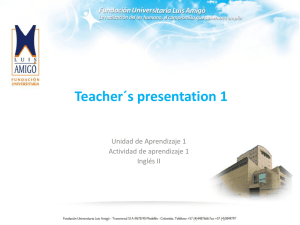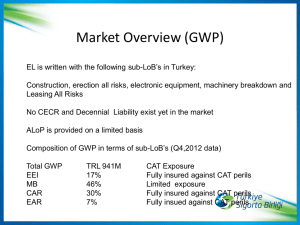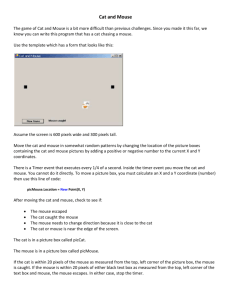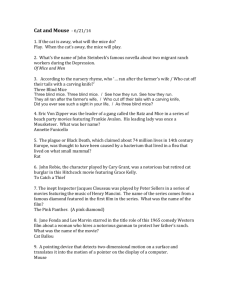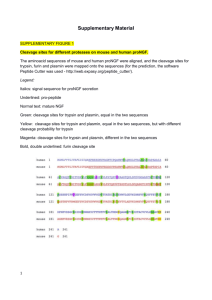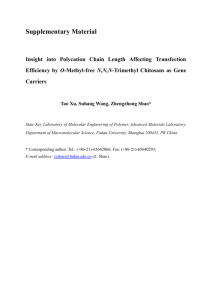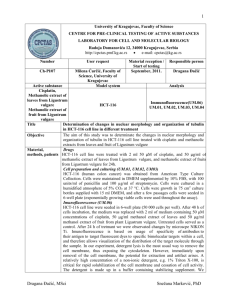HEP_22919_sm_SupportingDocument
advertisement
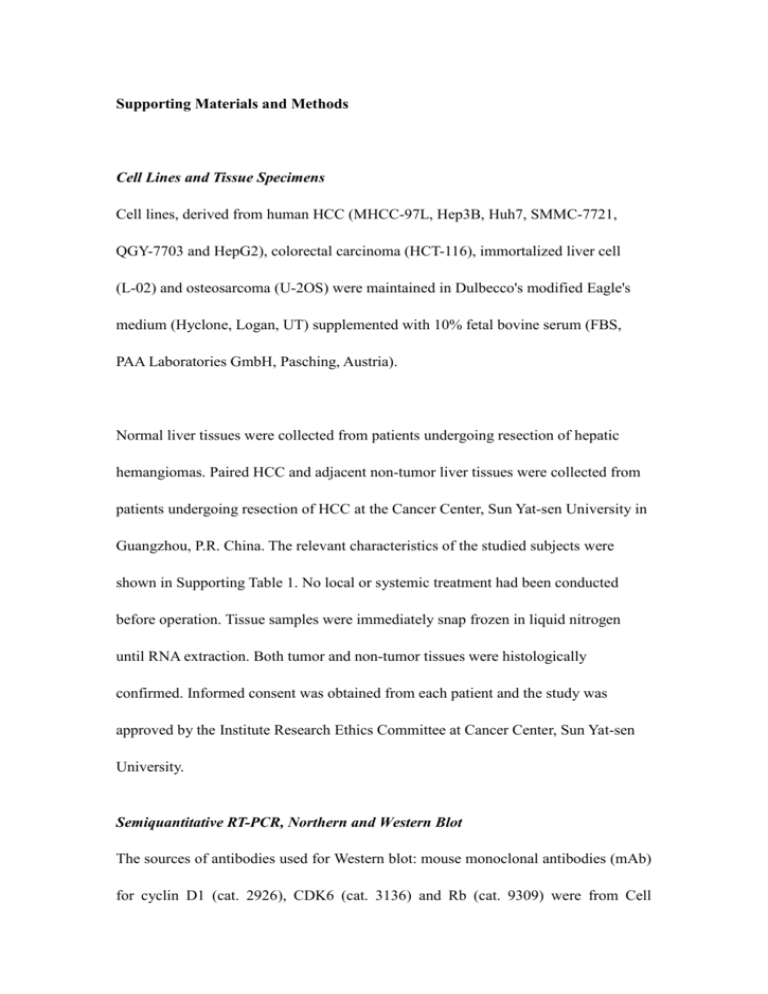
Supporting Materials and Methods Cell Lines and Tissue Specimens Cell lines, derived from human HCC (MHCC-97L, Hep3B, Huh7, SMMC-7721, QGY-7703 and HepG2), colorectal carcinoma (HCT-116), immortalized liver cell (L-02) and osteosarcoma (U-2OS) were maintained in Dulbecco's modified Eagle's medium (Hyclone, Logan, UT) supplemented with 10% fetal bovine serum (FBS, PAA Laboratories GmbH, Pasching, Austria). Normal liver tissues were collected from patients undergoing resection of hepatic hemangiomas. Paired HCC and adjacent non-tumor liver tissues were collected from patients undergoing resection of HCC at the Cancer Center, Sun Yat-sen University in Guangzhou, P.R. China. The relevant characteristics of the studied subjects were shown in Supporting Table 1. No local or systemic treatment had been conducted before operation. Tissue samples were immediately snap frozen in liquid nitrogen until RNA extraction. Both tumor and non-tumor tissues were histologically confirmed. Informed consent was obtained from each patient and the study was approved by the Institute Research Ethics Committee at Cancer Center, Sun Yat-sen University. Semiquantitative RT-PCR, Northern and Western Blot The sources of antibodies used for Western blot: mouse monoclonal antibodies (mAb) for cyclin D1 (cat. 2926), CDK6 (cat. 3136) and Rb (cat. 9309) were from Cell Signaling Technology (CST, Beverly, MA); Rabbit polyclonal antibody against phospho-Ser780 of Rb (cat. 9307, CST); mouse mAb for E2F3 (cat. 05-551, Upstate, Temecula, CA), c-Myc (cat. sc-40, Santa Cruz, CA), and β-actin (cat. BM0627, Boster, Wuhan, China). Analysis of Clonogenicity in vitro and Tumorigenicity in Nude Mice For clonogenicity analysis, 24 h after transfection, aliquots of viable transfected cells (1,000 cells for U-2OS, and 500 for other cell lines) were placed in 6-well plates and maintained in complete medium for 2-3 weeks. For anchorage-independent cell growth assay, 24 h after transfection, 5 × 104 viable HCT-116 cells suspended in 0.4% top agar (Invitrogen) were plated onto 0.6% base agar in 6-cm dish and maintained for 3 weeks. Colonies were fixed with methanol and stained with 0.1% crystal violet in 20% methanol. All experimental procedures involving animals were in accordance with the Guide for the Care and Use of Laboratory Animals (NIH publications Nos. 80-23, revised 1996) and were performed according to the institutional ethical guidelines for animal experiment. Viable miR-195- and NC-transfected MHCC-97L (1.5×106) or HCT-116 (1.0×106) viable cells were suspended in 100 μl PBS and then injected subcutaneously into either side of the posterior flank of the same female BALB/c athymic nude mouse at 4-5 weeks of age. Tumor growth was examined every three days for 4 weeks. Tumor volume (V) was monitored by measuring the length (L) and width (W) with calipers and calculated with the formula (L×W2) ×0.5. Cell Cycle Analysis For rescue assay, the DNA content of living cells was measured by FACS using Hoechst 33342. Cells were placed in 12-well plate, reverse-transfected with NC or miR-195, followed by transfection with a mixture of three plasmids (0.4 μg of each) 24 h later. Nocodazole (40 ng/ml) was added 32 h after plasmid transfection. Cells were cultured for additional 16 h, and then deprived of serum for 10 min, followed by incubation with Hoechst 33342 (10 μg/ml) for 20 min. After that, cells were resuspended in PBS containing 5% FBS. Propidium iodide (PI, 1 μg/ml) was added right before FACS analysis. PI-negative living cells with EGFP expression were gated for cell cycle analysis. Vector Construction and Luciferase Reporter Assay The expression vectors for miR-195 (pc3-miR-195) were generated by cloning the genomic fragments encompassing the corresponding miR-195 precursor and its 5’and 3’-flanking sequences into pcDNA3.0 (Invitrogen). The plasmid pc3-gab was produced based on pcDNA3.0 by replacing the neomycin open reading frame with an expression cassette of Enhanced Green Fluorescent Protein (EGFP) gene. The coding sequences of cyclin D1, CDK6 and E2F3 were cloned into pc3-gab to generate expression vectors named pc3-gab-CCND1, pc3-gab-CDK6 and pc3-gab-E2F3, respectively. Primers used are provided in Supporting Table 2. Immunohistochemisty Paraffin-embedded, formalin-fixed tissue was cut into 5-m section, placed on polylysine-coated slide, de-paraffinized in xylene, rehydrated through graded ethanol, quenched for endogenous peroxidase activity in 0.3% hydrogen peroxide, and processed for antigen retrieval by microwave heating in 10 mM citrate buffer (pH 6.0). Sections were incubated at 4℃ overnight with E2F3 mouse mAb (cat. 05-551, Upstate, Temecula, CA), cyclin D1 mouse mAb (cat. RTU-CYCLIN D1-GM, Novocastra, Newcastle, UK) or CDK6 rabbit pAb (cat. AP7522b, Abgent, San Diego, CA). Immunostaining was performed using ChemMate DAKO EnVision Detection Kit, Peroxidase/DAB, Rabbit/Mouse (code K 5007, DakoCytomation, Glostrup, Denmark), which resulted in a brown-colored precipitate at the antigen site. Subsequently, sections were counterstained with hematoxylin (Zymed Laboratories, South San Francisco, CA) and mounted in non-aqueous mounting medium. All runs included a no primary antibody control.




